Email marketing can be a game-changer for your WordPress site, but it’s easy to stumble into mistakes that hurt your results. Small errors can add up quickly, making it harder to connect with your audience and grow your business.
Things like sending too many emails, ignoring mobile users, or using poorly designed templates can frustrate subscribers and lead to high unsubscribe rates. Worse, these problems often go unnoticed until they start affecting your open rates and conversions.
Luckily, you can steer clear of these pitfalls with some simple adjustments.
At WPBeginner, email marketing is a key part of our strategy for connecting with readers and growing our business. We actively use email to engage our audience, share valuable content, and drive traffic to our site.
Over the years, we’ve tested and refined our approach, using specific tools and techniques to build a strong email list. In this article, we’ll highlight the most common email marketing mistakes that WordPress users should avoid so you can keep your list healthy and your campaigns effective.
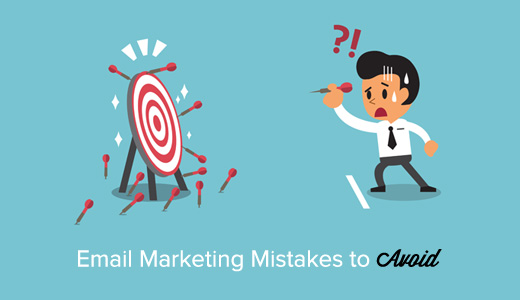
What Is Email Marketing and Why You Should Care
Email marketing offers a way to communicate directly with your site audience. It involves sending messages to a list of subscribers who have opted in to receive updates, promotions, or valuable information from you.
You can think of it as sending a friendly letter but in digital form!
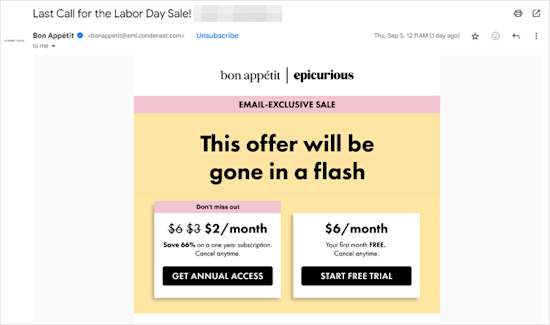
Now, you might wonder why email marketing is so important.
First, it allows you to build a relationship with your audience. When someone signs up for your emails, they’re showing interest in what you have to say or offer.
This means they’re more likely to engage with your content, whether it’s reading the latest content on your WordPress blog, checking out new products, or taking advantage of special deals.
For example, imagine you run a small coffee shop. By collecting email addresses from your customers, maybe through a signup sheet at the counter or an online contact form, you can keep them updated on your seasonal menus or any upcoming sales.
So, when you send out an email featuring the new caramel apple cider latte or announcing a buy-one-get-one-free offer, those customers are likely to stop by and make a purchase. This helps boost your sales and keeps your restaurant top-of-mind for your customers.
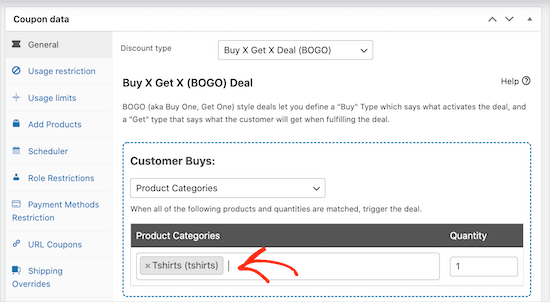
Email marketing can also help you segment your audience. This means you can send different messages to different groups of people based on their preferences or behaviors.
For instance, you might send special offers to loyal customers or share tips with those who signed up for your newsletter. This targeted approach can lead to higher engagement and better results.
With that in mind, we’ll share 11 email marketing mistakes WordPress users should avoid. Here’s a quick overview of all the things we’ll cover:
- Using WordPress to Run an Email List or Newsletter
- Confusing Blog Subscription Tools With an Email List
- Not Starting Email List Building Right Away
- Not Using a Lead Generation Software
- Using Only a Single Sign-Up Form
- Using Too Many Opt-Ins and Ruining User Experience
- Not Improving Lead Generation With Testing and Research
- Not Using RSS to Email Subscription
- Buying an Email List
- Ignoring Google Analytics to Boost Signups
- Sending Too Many Emails
- Bonus Tip: Push Notifications or Email – Which Is More Effective?
Ready? Let’s jump right in!
1. Using WordPress to Run an Email List or Newsletter
WordPress is a robust platform with built-in capability to send email notifications. However, it was not designed to send out email newsletters.
There are plenty of WordPress plugins that allow you to send out newsletters without signing up for an email marketing service. Using such a plugin to build your email list is a terrible idea.
First, your WordPress hosting provider would consider this a misuse of their terms and services. These mail servers are often poorly configured, have strict limits, and cannot send all your emails simultaneously.
Almost all users who start with a WordPress plugin or an email script end up signing up with a proper email marketing service. The switch affects their existing subscribers as many email service providers will ask them to opt-in again.
If you haven’t already, then it is time to sign up with a reputable email service provider like Constant Contact.
Alternatively, you can use a transactional email service provider like SendLayer.

It is the best SMTP service provider on the market, and it allows you to send mass emails with higher deliverability.
Using a proper email marketing platform will ensure that you don’t lose any subscribers and that all your emails always land in the user’s inbox.
For more on this topic, you can take a look at our article on why you should never use WordPress to send newsletter emails.
2. Confusing Blog Subscription Tools With an Email List

Another common misconception among WordPress users is confusing blog subscription tools with an email list.
Plugins like Jetpack or services like Feedly allow your users to receive blog posts via email or in their dashboard. However, this is not an email list.
- You cannot send out private email newsletters to your users with these tools.
- You do not own your email list.
- There are no contact management, advanced analytics, or any other features.
- You cannot effectively use such tools to capture more email subscribers.
If you want to switch from Jetpack, then take a look at these Jetpack alternatives.
You can also just import your JetPack subscribers into your email list. For details, see our tutorial on switching from Jetpack subscription to Mailchimp, Aweber, etc.
3. Not Starting Email List Building Right Away

Many small businesses and bloggers don’t realize how important email marketing is.
They keep adding new content and reaching out to audiences on social media while ignoring the most cost-effective marketing tool at their disposal.
99% of email users check their email at least daily. The majority of users check it multiple times a day. (Source: Marketing Statistics, Trends, and Facts)
Almost 75% of visitors to your website from search engines will never return. Building an email list allows you to reach out to your users, bring them back, and boost your sales.
If you haven’t already started building your email list, then check out our article about why you should start building your email list right away.
4. Not Using a Lead Generation Software

Many users complain that their email list is not growing fast enough or that users are not signing up. Some users rely purely on guesswork to determine what would work on their site.
You can use lead generation software like OptinMonster to quickly grow your email list.
OptinMonster helps you convert abandoning website visitors into email subscribers. See our case study of how we increased our email subscribers by 600% using OptinMonster.
For more information, please see our complete OptinMonster review.
5. Using Only a Single Sign-Up Form
Many bloggers and small business owners place a signup form on their website and then forget about it.
Your users have a shorter attention span; unless you are a celebrity, most users will probably not even notice your signup form.
Case Study: Our expert team shared insider tips for growing an email list quickly.
You will need to improve your lead generation by placing multiple opt-in forms at strategic locations. OptinMonster allows you to use smart popups, slide-in forms, after-post options, and many other ways to make your email signup forms more noticeable.
6. Using Too Many Opt-Ins and Ruining User Experience

While using multiple opt-ins boosts your email signups, using too many of them can have an adverse effect. So, you need to find a balance between a reasonable number of optins and a good user experience.
For example, using a popup form, slide-in opt-in, and welcome gate together on the same page can annoy your users.
A bad user experience not only discourages users from browsing your website, but it can also negatively impact your sales and SEO.
We recommend combining a static form (sidebar or inline) and a dynamic form (slide-in, welcome gate, or popup).
7. Not Improving Lead Generation With Testing and Research

Often, users turn on a signup form and then leave it alone. Without proper strategy and testing, your growth will be stagnant.
You need to regularly check which opt-ins are working on your website and run A/B tests to see how to improve.
Most popular email marketing platforms come with their own analytics, often showing how many of your emails were opened and clicked.
To optimize your results, you might want to try using different email subject lines, discount offers, and email content to see what works well with your customers.
8. Not Using RSS to Email Subscription
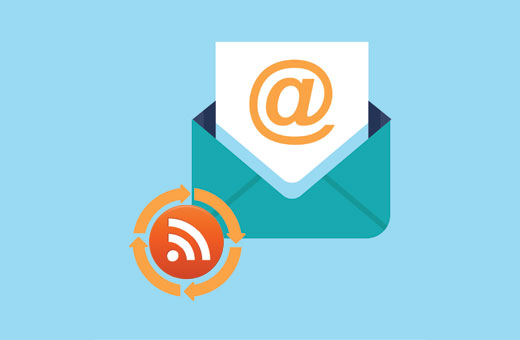
Collecting email addresses alone is not going to do anything for your business unless you use them to engage with your users. In other words, you need to send emails to your users and stay in touch with them.
Connecting your blog’s RSS feed to your email list allows you to send emails to your users whenever new content is made on your blog.
It helps users check out new blog posts and learn about your business/services. It also helps you build brand recognition among your users.
For detailed instructions, see our tutorial on how to add an email subscription to your WordPress blog.
9. Buying an Email List

Buying an email list is undoubtedly the worst thing you can do to kill your whole email marketing.
Those email lists are not real. Even if some addresses are legit, those people don’t know you and never signed up to receive your emails. You will be spending much more money to get very little response.
This can also lead to a consent issue as you send unsolicited emails and risk your brand name being included in spam filters.
Consequently, you can be banned or penalized by your email service provider.
10. Ignoring Google Analytics to Boost Signups

Google Analytics offers a treasure trove of useful data that helps you make informed decisions. Many site owners aren’t aware of how to use this information to build their email list.
The easiest way to get started is by using MonsterInsights, the best Google Analytics plugin on the market, which helps you easily track website traffic.
If you haven’t yet installed it, then check out our guide on how to install Google Analytics in WordPress.
Need help tracking email conversions on your website? Then, you might want to see our complete guide on WordPress conversion tracking.
11. Sending Too Many Emails
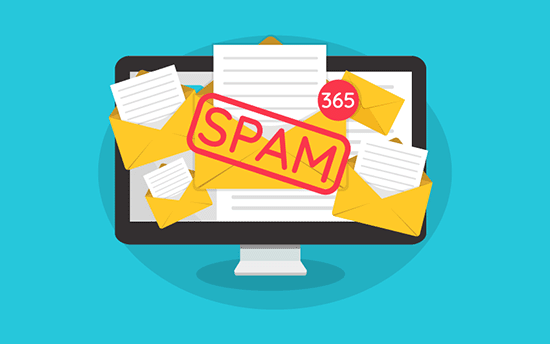
We mentioned earlier that not sending enough emails can be a big mistake. Sending too many emails can be equally destructive.
Your users should know how many emails they should expect to receive when they sign up. Many sites, including WPBeginner, allow users to choose from weekly, monthly, or daily emails.
If you are not segmenting your list like this, then you will need to figure out the balance between a healthy and annoying email frequency.
Bonus Tip: Push Notifications or Email – Which Is More Effective?
When it comes to sharing important messages with your audience, you have a choice: do you send a quick push notification that catches their attention instantly, or do you craft a well-designed email that patiently waits in their inbox?
Push notifications and email marketing serve distinct purposes, each with unique benefits and drawbacks.
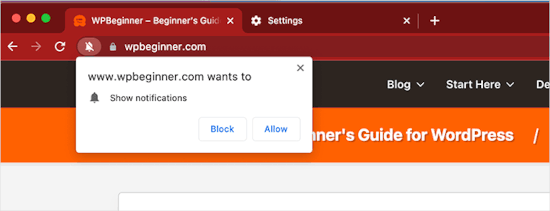
Both channels can enhance conversion rates, recover cart abandonment, boost eCommerce sales, and increase user engagement when used effectively.
Now, the choice between them often depends on the platform, as each may perform better in different situations.
For more details, you can check out our head-to-head on push notifications vs. email, where we explore the pros and cons of each method in depth.
We hope this article helped you learn about the most common mistakes WordPress users make while building their email lists. You may also want to see our guides on how to add beautiful email templates and how to send automated emails in WordPress.
If you liked this article, then please subscribe to our YouTube Channel for WordPress video tutorials. You can also find us on Twitter and Facebook.





Dennis Muthomi
Solid point on not using WordPress plugins for email newsletters – they’re just not worth the headache! I manage multiple client websites, and I’ve seen this mistake firsthand.
When clients try using basic WordPress plugins for their email campaigns, it usually ends badly.
Here’s what worked for me: I show clients the delivery problems these plugins have. Once they see the issues, they’re quick to switch to proper email marketing services.
Quick tip from my experience: Always set up a double opt-in system with a branded confirmation page. It’s made such a difference! My clients are seeing way less spam subscriptions and much better list quality.
Jiří Vaněk
These are very valuable tips. I started collecting emails six months ago, and thanks to Optin Monster, I already have a pretty good list of addresses. However, the collection is still quite slow, so I haven’t launched any email campaigns yet. It’s good to read advice like this to improve address collection and speed things up, as I must be making mistakes. Thanks.
Lydia
I love the types of articles that tell you what NOT to do because I often have fear of moving forward, afraid I will do something that will take too much time and money to fix.
My top 2 takeaways from this article are to start using OptinMonster and to have more than one place for people to subscribe. Thanks!
WPBeginner Support
You’re welcome, glad our guide was helpful
Admin
vanessa
Thanks for the great info. These tips are very helpful.
WPBeginner Support
You’re welcome, glad our recommendations were helpful
Admin
Tinashe
Awesome post. Thanks for your insight into email marketing. It’s a great platform for small businesses. Keep up the good work…
Nick
Good tips. These days there’s plenty of quality affordable email marketing services like Mailchimp, SendPulse or AWeber. You can even use some of them for free with some restrictions – for many smaller businesses this IS more than sufficient. I just can’t imagine why would anyone use WP for doing something it was not designed for in the first place.